Re-potting House Plants – Elephant Bush In A New Planter
One of my easiest plants to root new cuttings/babies from is my Elephant Bush or Portulacaria afra. I have always depended on it to get new starts for various hypertufa pots each spring and get a lot of new growth for the year in a new pot. But I hit a little snag as you know this winter.
My Elephant Bush plant got attacked by mealybugs as I wrote about on a recent post. But I am happy to say that, weeks later, I feel that it has recovered very well. The treatment that I used as explained in the post took care of them, and since I isolated it across the room, I have not seen any evidence of any infestation on anything else. I am not sure where the first one entered the house, but I suspect one of the new plants I have carried in.
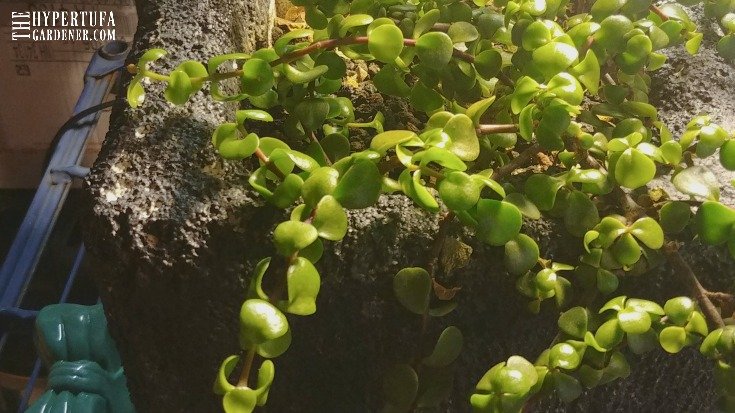
The stems seem clean and free of white spots, and have their “shine” back. So I want to get it transplanted into a new pot and fresh soil. She will have a new lease on life, right?
But since I haven’t seen mealybugs or anything on the other plants, perhaps a hitchhiker rode in on the cellophane wrappings or something? Not sure if I will even know, but now I think everything will be suspect and be removed in the future.
Elephant Bush Ready to Re-Pot
I have had this elephant bush plant in the Styrofoam container, I call it Almost Hypertufa, since I paint and texture it to look like hypertufa, but I decided to pull it out of the planter and put it into something else. Choosing a white ceramic planter that I was using to store garden tools, I realized that I really like the color against the dark green of the plant.
Maybe this year I should try more color in my hypertufa? I could paint or treat them to get more color variations. How about I do that and show some of my experiments in future videos? I am always looking for ideas for a new video.
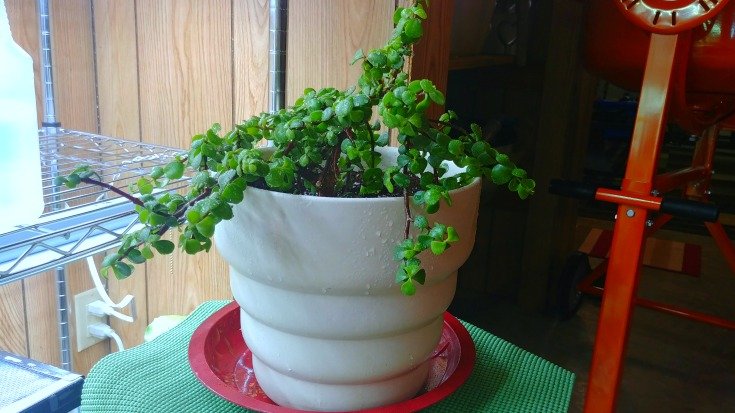
This elephant bush plant will stay inside this year. Since I have started a large indoor gardening project, including many house plants of all kinds and those tender succulents that I was not willing to grow previously, I think I will have a totally separate garden all year long. That way I can still enjoy everything inside when we have rainy days or snowy days. Works for me.
As I get older, I don’t know how easy it may be for me to be outside in a large garden weeding and tending it. Perhaps one day I won’t even be able to get downstairs to the basement, to my garden shop where everything is? I would dread for that to be. Who knows what the future holds.
Am I rambling?
Potting Soil for Elephant Bush
I am using a very porous soil since the Portulacaria afra plant needs very well-draining soil. Using perlite allows the soil to hold air and let the water drain through quickly so that roots can never be sitting in water. I amend regular potting soil with a lot of perlite or, if I am using cactus soil anyway, I will use a good portion of perlite or turkey grit ( which is crushed granite) in order to make the soil easy for the roots to move through.
In a previous post, I discussed the difference between perlite and vermiculite for soils,What’s It Gonna Be? Vermiculite or Perlite for Hypertufa? What About In Soil? and in this case, I think perlite is the best choice. We don’t want to hold moisture for this plant in Ohio gardens. However, remember if you are in a dryer climate, you may need to hold onto moisture more than I do here. Perhaps vermiculite in your soil would work better than having to water twice a week.
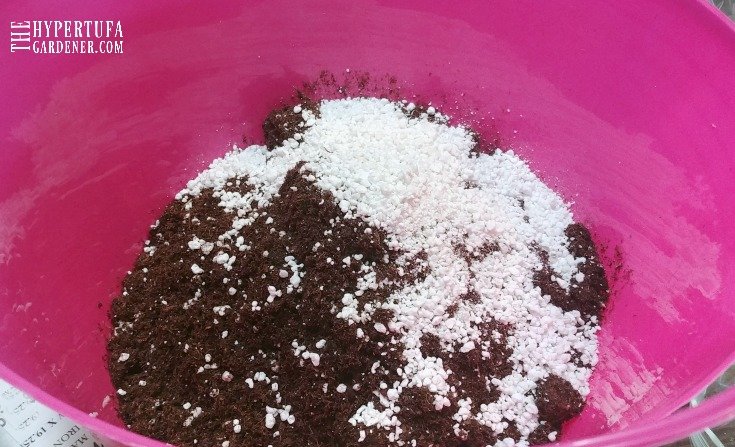
Did you notice when I un-potted the plant in the video? The soil around the roots just fell away showing me how loose and “free” the soil was in that planter. The elephant bush had been in that same planter for years and was not compacted in any way whatsoever! So its roots were able to roam through to seek moisture and nutrients easily. Perhaps that even helped it to recover from the mealybugs? ( I’ve removed it from the planter just in case there was a Hermit Mealybug hiding in the tiny crevices of that old Styrofoam. In summer, I will wash and treat that planter with alcohol and a week in hot sun inside a black plastic bag. Take that, Mealybug!)
New Home for the Elephant Bush
I really think the new pot is going to be great for my plant. It is large enough to be a statement plant somewhere inside, but not large enough as a floor plant. My collection is growing and hopefully not getting out of control. I will have to film a house plant tour and some more shopping trips. Those were fun to make and gave me an excuse to buy more plants….Um, I mean do more research.Here’s a Pin for you to pin!
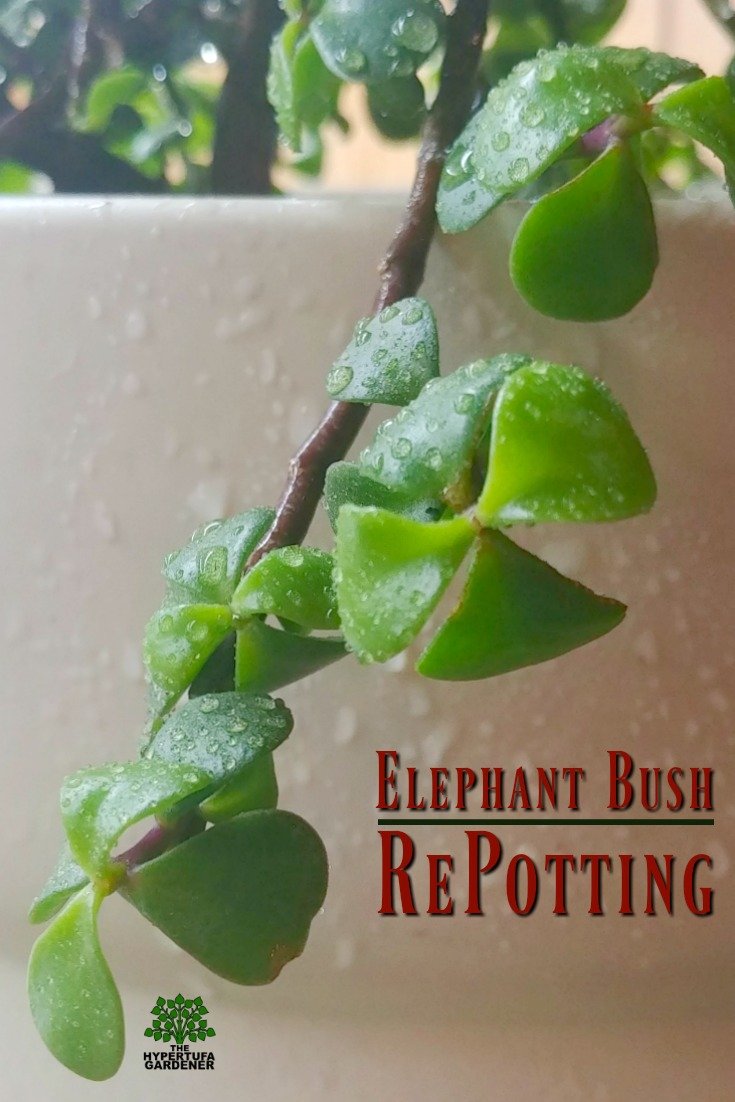
How is your indoor garden doing? Do you have many house plants? I am certainly going to have a lot more if all my new babies grow! So many new little Elephant bush babies! Be sure to watch the video. I appreciate your comments so much.
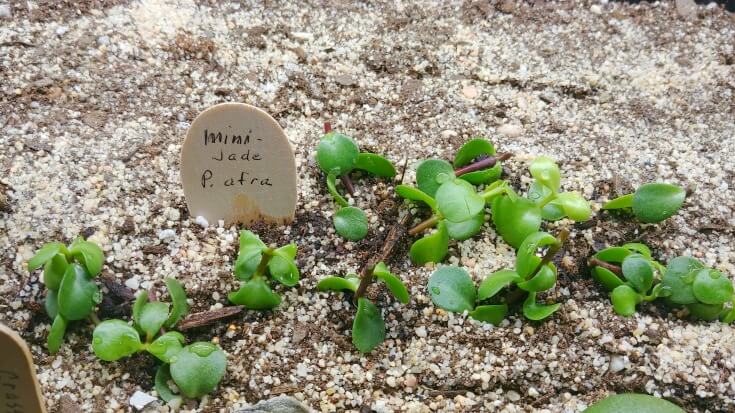


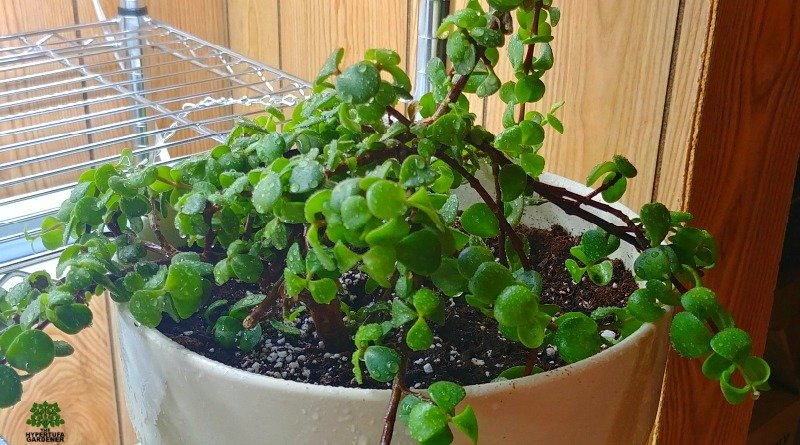
Awesome! Quick Question: I bought an moderate sized portulacaria afra from a nursery and I wanted to divide and repot it. This is, and intends to be, an indoor bonsai plant, but right now it is in a crowded 6″ pot.
So. It’s the dead of winter, it shed a lot of leaves (probably cooler in my house than the nursery). Gets bright light (winter; pacific northwest like Seattle) in a south/southwest area (not against window…too cold).
I just read you should NEVER repot these in winter, because they will drop leaves and die. I also read elsewhere it is o.k. to transplant them indoor in winter because it gives the roots a chance to grow/establish to support spring and summer growth.
Now, these are contradictory and confusing!! I would like your opinion on this. Is it o.k. or bad to repot these in winter?
I haven’t had any problem repotting mine in winter since I keep it inside at a constant temperature. If it was outdoors at a lower temperature, the winter might set it back a little, but when it is inside and temps are constantly near 70F and constant day and night lights, I don’t think it can really tell winter from summer. JMO